Disruption opportunities
The development of new materials or the improvement of existing industrial processes requires digesting and evaluating large amounts of data collected from an extensive number of publications, internal and external reports as well as proprietary data. The analysis of this vast body of dormant data generates knowledge that has rarely been mined to solve problems in other contexts. Until now.
Businesses need to access growing amounts of widely diverse information quickly and easily from highly unstructured sources such as documents, images and graphs. These are known as “dark” sources of dormant data. Cognitive discovery aims to automate the extraction of knowledge from dark sources, including the reasoning related to this knowledge, and to store this rich body of knowledge for application to future scientific or technological questions.
This approach constitutes a new way of doing R & D. We call it “precise R & D” because we exploit the dormant knowledge accumulated over years to arrive more quickly and accurately at a solution to the issue at hand. This is the essence of cognitive discovery.
In cognitive discovery, we use knowledge from public and proprietary sources combined with knowledge derived from numerical simulations as well as the outcome of experimental setups to define a unique knowledge space in which all the stored entities are semantically interconnected. Within this knowledge space, we deploy artificial-intelligence learning models to mine the data and to predict new materials or improve existing processes in a manner that formerly only the human brain could perform.
Conventional R & D approach
Today, innovation typically begins with an opportunistic discovery, which triggers a large number of experiments and simulations in a divergent fashion that generates a certain — often quite extensive — body of knowledge.
In the best-case scenario, this knowledge can be developed to achieve a single business opportunity, such as a new product.
However, the rest of the knowledge created during this discovery process is virtually lost because it is never reapplied in other contexts. We refer to this vast, untapped resource as dormant knowledge.
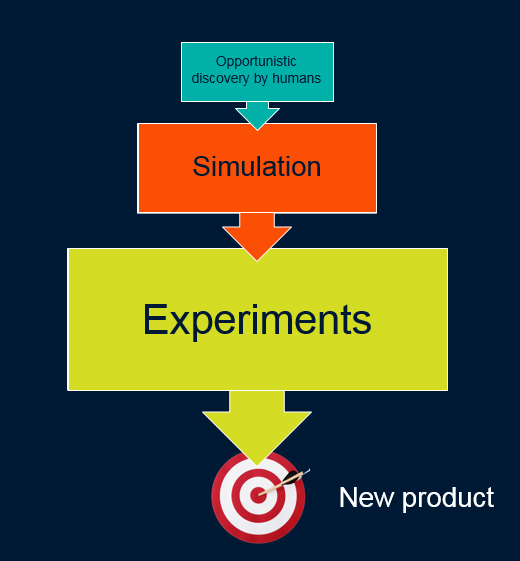
Cognitive R & D approach
Within the cognitive discovery paradigm, a business opportunity is specifically planned, instead of relying on opportunistic discovery.
To do so, we leverage the vast body of accumulated human knowledge by interlinking each information entity.
This is called a convergent R & D process, which is much more efficient because it requires far fewer numerical and practical experiments to achieve a final product.
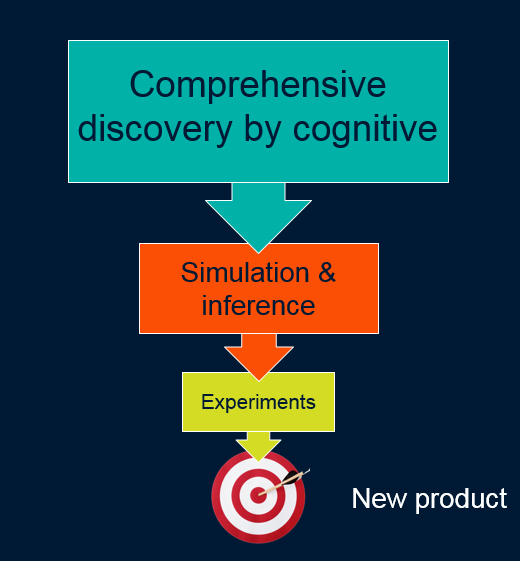
Video
The cognitive approach
Scenario
Pharma
A pharma company is developing a drug for a specific medical usage. After ten cost-intensive years of research, testing and design, the drug is finally brought to market. The ten years of knowledge accumulation related to the development of this drug is typically stored in internal proprietary reports that become dormant — and in effect forgotten — after a certain employee lifecycle.
It would clearly be in the company’s interest to preserve this knowledge in order to reuse it in other drug-design contexts. What’s more, when this drug is on the market, many people taking it may experience certain side effects, which they are increasingly likely to share on social media platforms such as blogs and patient forums.
Eventually, and sometimes rather quickly, a considerable body of knowledge can accumulate in these channels. However, this data can be difficult to extract and analyze because it exists in natural language and may not be expressed in conventional medical terms. Nevertheless, the common side effects described in these online discussions could provide valuable insights for repurposing the drug to treat other medical conditions.
And it’s completely free! Online channels of this kind are a gratuitous source of vital clinical knowledge and information that, although difficult to extract, could harbor a wealth of valuable information for the pharma company.
Video
Foundations of cognitive computing
Visionary perspective
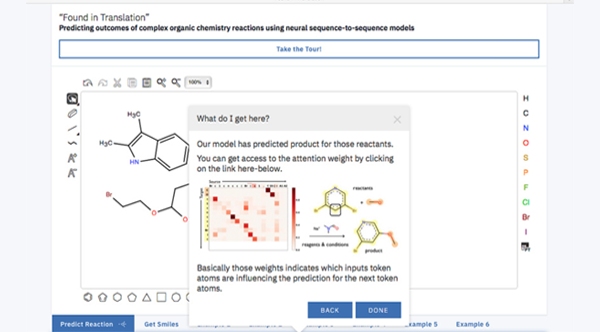
Using neural networks to predict outcomes of organic chemistry
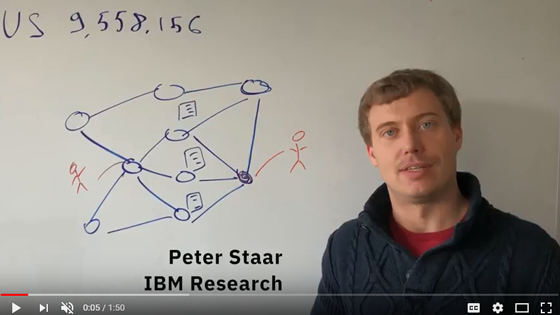
IBM scientist Peter Staar explains
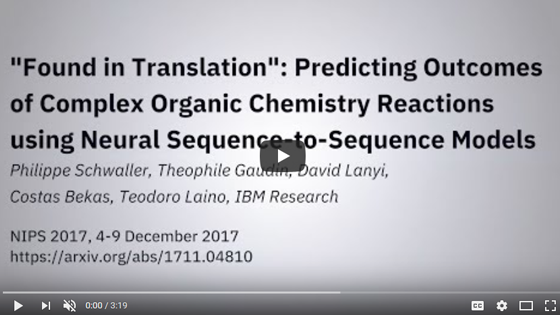
Predicting outcomes of complex organic chemistry reactions

Pushing the frontiers of R & D with artificial intelligence
Ask the experts

Valery Weber
IBM Research scientist







